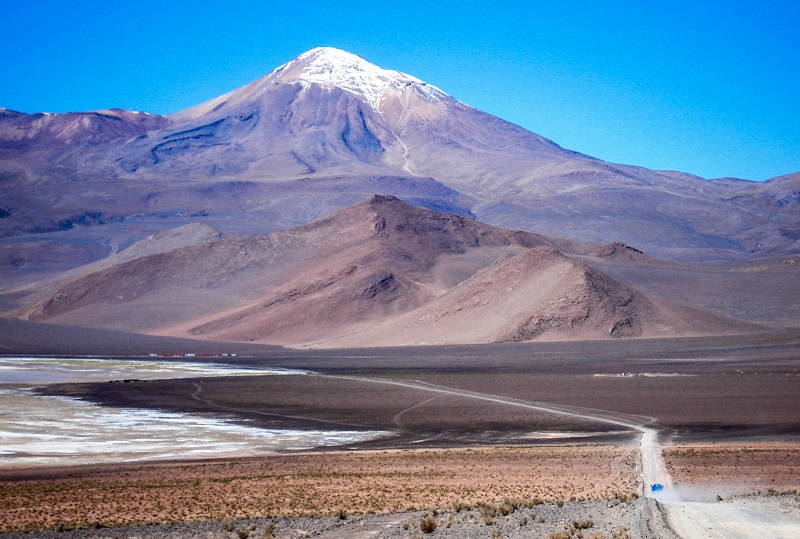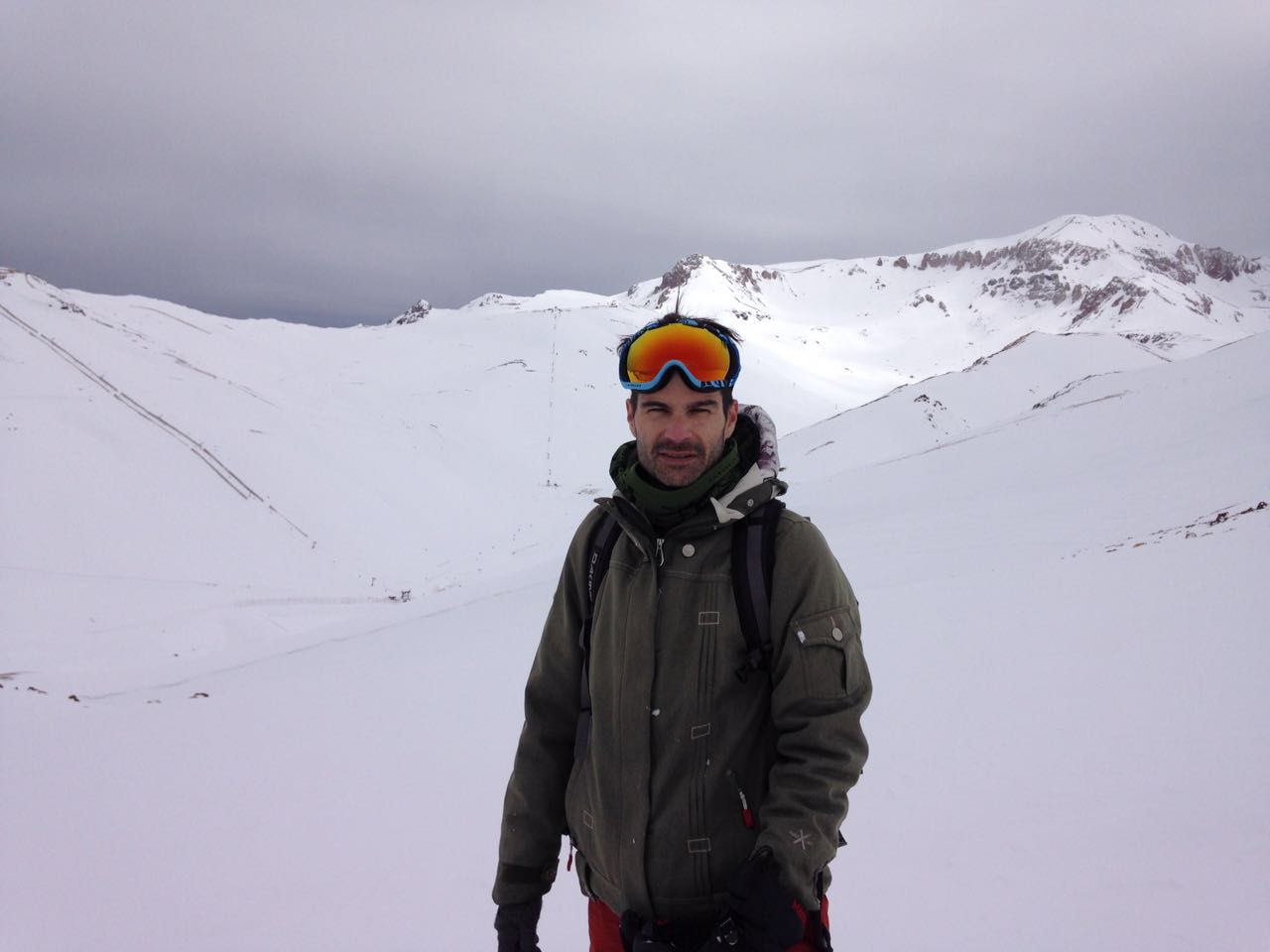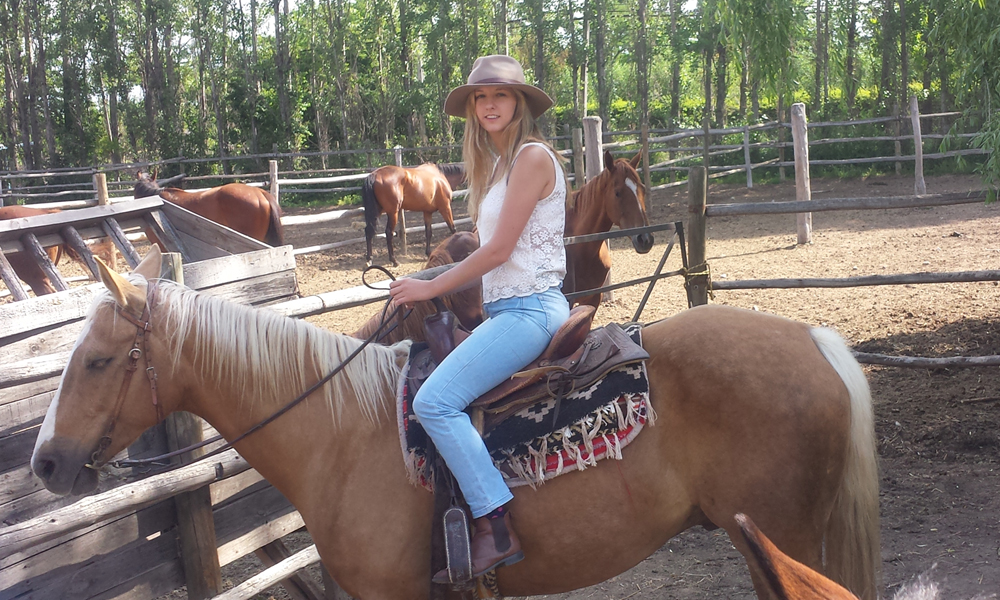Our hub in Chile is nurturing some exciting up and coming research talent. Meet Alfredo, Gabriella, and Nicolas.
Our hub in Chile is nurturing some exciting up and coming research talent. Meet Alfredo, Gabriella, and Nicolas.

Región de Antofagasta, Chile. Image credit - Daniel Diaz Vera / Flickr
Región de Antofagasta, Chile. Image credit – Daniel Diaz Vera / Flickr
Alfredo Lopez – the mathematician
Alfredo Lopez is applying his mathematical knowledge to some of the complex data challenges facing the mining industry. He works in a team that models the geometallurgy of mine sites – that is, the characteristics of a mine’s metal ores.
“I like the possibility of doing high level math combined with high level applications,” he says.

When he’s not hard at his mathematics, Alfredo likes to hit the slopes of the Andes on his snowboard.
When he’s not hard at his mathematics, Alfredo likes to hit the slopes of the Andes on his snowboard.
When the mining industry is prospecting for minerals, or making decisions about how to best develop a resource, they obtain samples of the earth using drill-coring. These drill cores are then analysed with high tech machinery and a whole range of data is collected about their geometallurgical characteristics, such as mineralisation, geochemistry and ore recovery, and combined with of other data like depth and location. A lot of data can be obtained from drill cores but it then takes someone like Alfredo to make sense of it all.
“I work in the data mining aspect, this has to do with extracting knowledge from data that comes from the exploration of drill cores. A good data mining discovery can lead to good mine planning.”
Alfredo uses mathematics to find patterns in the data, which can be used to predict and model what a particular mine site is likely to yield and where, based on the drill core samples. Ultimately, this mathematical modelling will be integrated into software so this sort of characterisation can be done automatically.
“I would say that the big impact will be in the insight that it provides decision makers.”
Armed with this sort of information, mine planners can make decisions about where and how to mine in order to get the best value of mineral resources.
Gabriella Bennison – the water resource researcher
After a fascination as a child with England’s grand buildings and bridges, Gabriella’s desire to know how they managed to stay standing led her into Civil Engineering studies. An internship in Tanzania then got her interested in how engineering can deliver water supply and sanitation solutions, particularly for poor rural areas. Gabriella’s Masters research on water management issues in Chile’s Copiapo Basin made her a perfect candidate for CSIRO Chile’s Land and Water program, where she now works on Integrated Water Resource Management (IWRM).

Gabriella says she has enjoyed exploring a different countryside, and being treated to different weather, after moving from the UK.
Gabriella says she has enjoyed exploring a different countryside, and being treated to different weather, after moving from the UK.
“The main idea of IWRM is to move away from a heavily weighted engineering approach to water issues to more holistic solutions through the promotion of a participatory approach between all users and stakeholders across the entire river basin,” she says.
“By bringing all interested parties around one table it can bring empowerment to society at a local level to improve management of their water resources through active discussions and problem solving.”
The Land and Water team Gabriella works with are applying their expertise to various water basins in Chile, from the parched landscapes of the Atacama Desert in the north, to those further south that are preparing for changes brought by climate change, social development and increased environmental awareness.
“CSIRO Chile offers a great balance between working for an internationally renowned organisation but at the same time working with local Chilean people. It’s exciting to work in an organisation with huge growth potential, especially in the area of land and water.”
Nicolas Gonzalez – the informatics engineer
Nicolas is helping develop technology to make the slopes of open pit mines more safe and stable. In the next ten years, large open pit mines in places like Chile and Australia are expected to reach depths of up to one kilometre. Slope failure in these mines could not only cause costly losses of operation time and productivity but in a worst-case scenario could result in injury and death. That’s why we’re helping ensure the mining industry has the best technology to detect and prevent any potentially unstable ground before failures occur.

Away from the research lab, Nicolas likes to spend his free time with his young daughter.
Away from the research lab, Nicolas likes to spend his free time with his young daughter.
“My expertise is in big data, analysing it, and creating usable interfaces. I make sense of big data, in this case data from open pit mine slopes.”
Nicolas and the other members of his team use data from a network of sensors embedded in the slopes of open pit mines. Their job is to bring together raw data from a vast number of these sensors in order to build a coherent picture of the stability of slopes. Nicolas has designed an online system that allows that information to be visualised so slopes can be monitored in real time.
“This can be used to inform a mine operator when and where there is a problem. At the moment, these sensors are checked manually. For the future, we are designing a system that is self-checking. It will send an alert if any problem is detected. To do this our team is using machine learning techniques, similar to artificial intelligence.”
One of the things Nicolas likes about working on these types of applied projects is that he gets the opportunity to try his hand at a variety of tasks and learn new things, from programming to web interfaces and electronics.
You can find out about more of our work at CSIRO Chile here.


8th June 2016 at 4:28 pm
Great to see and read about the great researchers in CSIRO Chile
15th June 2016 at 3:08 pm
Especially female ones!!!